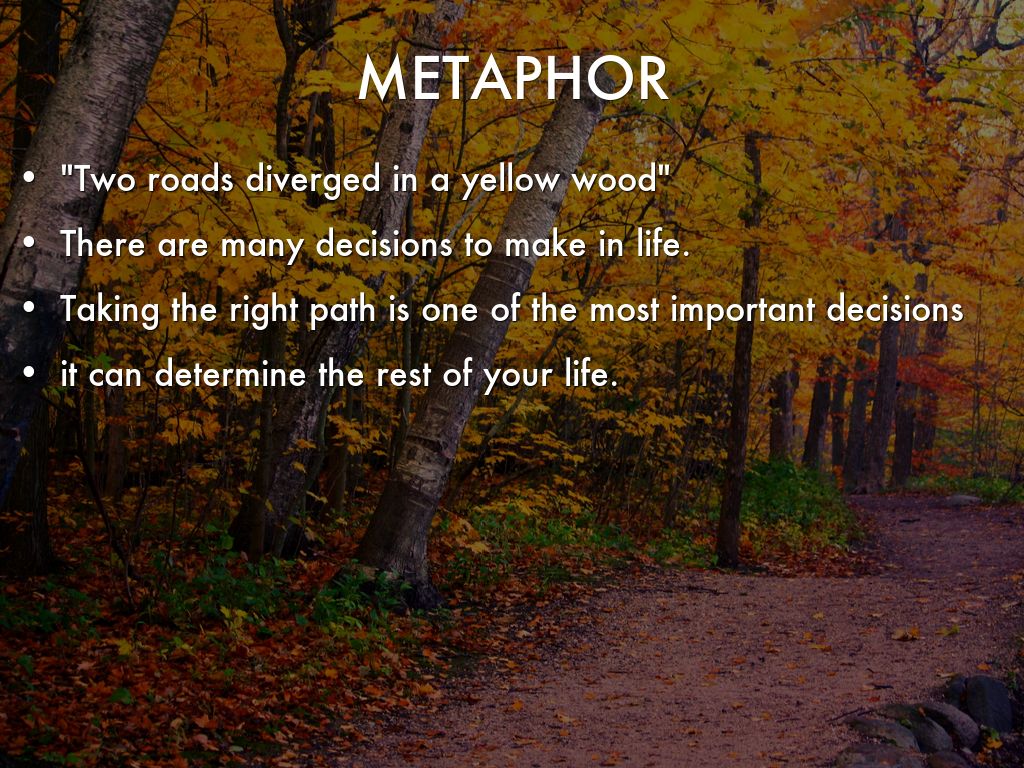

He wanted the excitement and adventure of choosing to walk a path that was not frequented by too many people. The poet left the first path because it was well-trodden.

Though he is tempted to walk on both, he decides to take the second path with the intention of walking on the other one sometime in the future. One of the roads looks more frequented by people while the second road appears to be less travelled on.

When the narrator comes to a fork in the road, he is not able to decide which path to take. No, he did not think he would do so because he knew that one path would lead to another and it would be difficult for him to come back.ĭoes one road seem to be more appealing than the other? Use examples from the poem to support your answer. The narrator hoped to come back and try the other path someday. What did the narrator hope that he would do one day? Was he sure of doing so? Also, the poet was more adventurous and wanted to take a route not many had taken. It was a grassy road and so more inviting as not many people had walked on it. The narrator took the road that not many people had taken. Which of the two roads did the narrator take? Why? The roads were not similar as one was less used and so had more grass and seemed less used than the other. He saw two paths diverging from a fork in the road and disappearing in the undergrowth. What is a wood? What did the narrator see in the wood? Were the paths similar? The poet decides to take the less frequented road.
#The poem the road not taken full#
While one of the roads is the more frequented and easy, the other is less travelled and full of challenges. Both the roads are equally attractive and inviting. He comes to a fork in the woods and does not know which path to take. The setting of the poem is a wood where the poet, Robert Frost, has gone for a walk. The Road Not Taken Extra Questions and Answers Class 9 English Beehive The Road Not Taken Extra Questions and Answers Short Answer Type


 0 kommentar(er)
0 kommentar(er)
